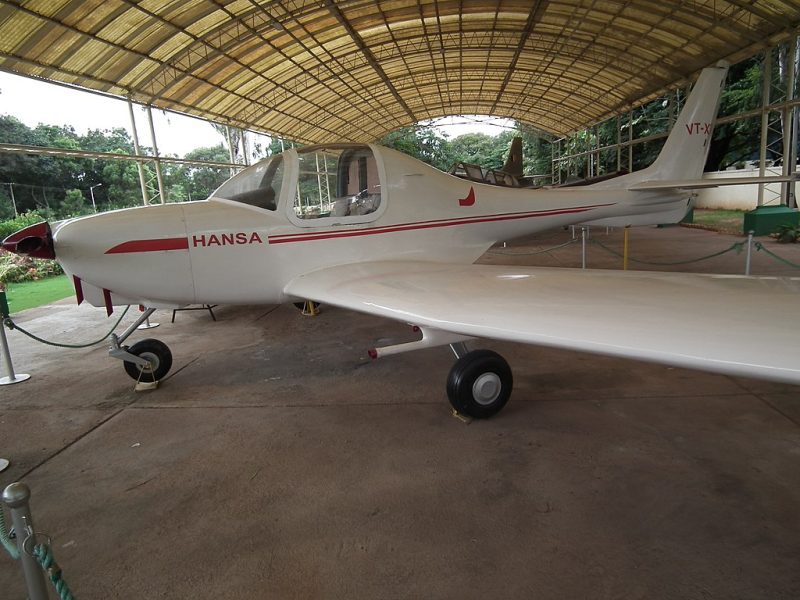
Homegrown small aircraft Hansa is making a comeback after 20 years
Hansa-NG is seen to be a good fit for Indian flight training organisations, which currently depend on foreign aircraft for initial training

Two decades after it first appeared in the market, India’s home-grown small aircraft Hansa is making a comeback. The development comes at a time when the government aims to promote flying schools to meet the growing demand for trained pilots in India. For the light trainer aircraft, that potentially means a fresh shot at an opportunity that eluded it in its first innings.
The two-seater Hansa-NG — the new version of the Hansa-3 light trainer launched in 2000 by Bengaluru-based National Aerospace Laboratories (NAL) — is currently undergoing trials. Earlier, NAL said that the aircraft is on track for type certification from the Directorate General of Civil Aviation (DGCA) by April.

“Few more flights will be conducted before getting Type Certification by DGCA. Type Certification is likely to be completed by April, 2022 and thereafter the manufacturing will be initiated with public/private industry,” DCGA said in a release.
Aviation sector experts reckon the Hansa NG will be a good fit for Indian flight training organisations (FTOs), which currently depend on foreign aircraft for initial flight training as well as instrument flying training for commercial pilots.
Also read: Here’s how India has historically rescued its nationals from war zones
Essentially, the Hansa NG will be competing with a variety of light-sport aircraft available in the market.
‘Perfect’ for flying schools
“The aircraft is a perfect trainer for our Indian flying schools. Basically the aircraft is very forgiving to fly and the characteristics are very conventional of a regular aircraft,” says Capt Mihir Bhagvati, president of the Bombay Flying Club, who has test flown the Hansa NG. “Apart from that, it has got good endurance and range which the previous model lacked.”
The earlier version was geared towards a different audience such as private pilots and hobby flying, he says. “It was a two-seater aircraft which could fly from point A to point B,” says Bhagvati, explaining that trainer aircraft have a different set of requirements. “So, there were certain requirements where you had to do a 300 nautical mile cross-country with two full stop landings which it wouldn’t meet. So, any flying organisation would only buy aircraft which would meet the entire requirement.”
In total, about 14 Hansa-3 planes were produced by NAL and some went to flying clubs. But that, an aviation expert pointed out, was also at a time when many flying clubs were importing used Cessna aircraft for their operations.
Most popular models
The four-seater Cessna 172 and the out-of-production Cessna 152 two-seater are among the world’s most popular training aircraft.
The NAL, which is part of the Council for Scientific and Industrial Research, began work on Hansa-NG in 2018, incorporating modifications based on suggestions from the flying community to make it more useful for flying clubs.
The Hansa-NG uses an Austrian-built Rotax engine that runs on both aviation fuel and motor gasoline, or unleaded petrol, and it comes with a glass cockpit.
According to NAL, about 80 letters of intent have been received from various flying clubs.
“We also have an intent to buy this airplane. We are looking at introducing three of them in our fleet,” said Bhagvati.
Demand for new FTOs in India is expected to increase, given the high potential for air travel in the country and the government‘s policy in September 2020 to remove airport royalty and rationalise land leasing rates for new FTOs being set up at airports, points out Waseem Khan, aerospace and defense analyst at Frost & Sullivan.
“At present, around 40 percent of the total commercial pilot license is provided to cadets trained abroad. The local FTO has a high probability of minimising the exodus if they update their infrastructure,” says Khan. Currently, there are 34 FTOs in the country.
Viability issues
Costs at Indian flying schools are still higher than what international flying clubs operate at, say industry experts. “This is a long-term play. We need flying schools and having an indigenously-manufactured trainer is an important and great initiative of the government. In addition to this, there are some other issues that also need to be addressed. Until you fix these, the whole issue about viability will continue,” says aviation consultant Dhiraj Mathur.
Also read: International flights, sans air bubble, to resume from March 27
Mihir Bhagvati of the Bombay Flying Club said that the Hansa-NG is a good step to start with, given that flying clubs are fully dependent on aircraft coming in from abroad. “I think it can really change the game of Indian aviation. It is very comparable to any western aircraft in this category and size,” he said.
Flying clubs typically overhaul an aircraft every 12 years, replacing the engine and propellers and other components. With the Hansa NG, they could look at expanding the existing fleet with new planes, he says. “If the price is reasonable everyone will go for it and I’m sure NAL will be taking into consideration the market conditions and pricing.”


